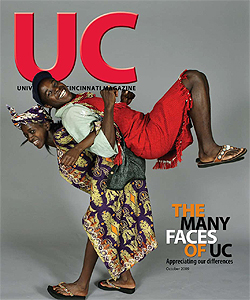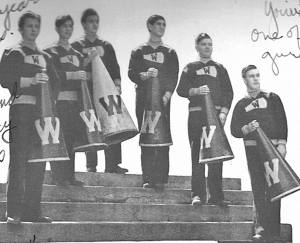University of Cincinnati magazine encourages readers to submit letters. Letters submitted online may be considered for publication here and in the print edition of the magazine.
Off the charts
I just wanted to tell you how much we are enjoying "UC Magazine." The last two issues just have been off the charts. It seems like everywhere Gayle and I are with UC friends they are talking positively about the magazine.
The most recent issue is a real winner. The causes supported and the way you have written about them makes one proud to be an alum. Keep up the great work.
Robert "Mick" McLaughlin, Bus '63, MBA '67
UC Alumni Distinguished Service Award
Former associate dean, administrative services, Clermont College
Cincinnati

 Issue Archive
Issue Archive